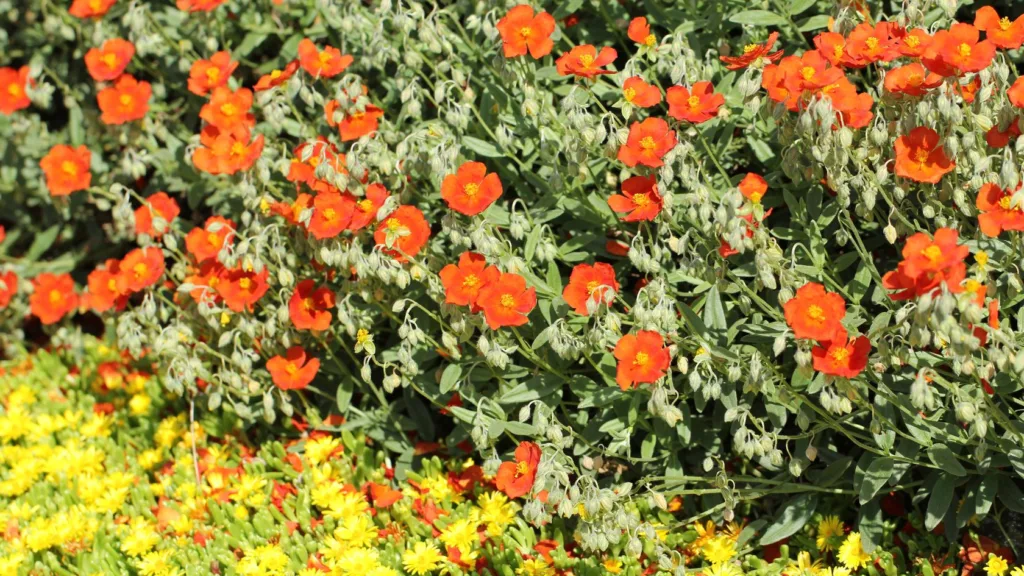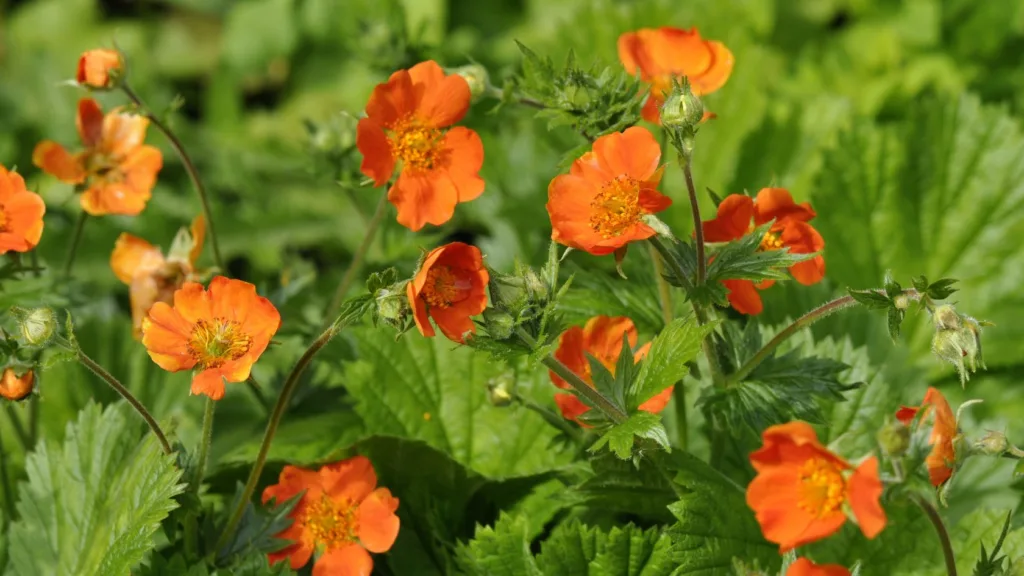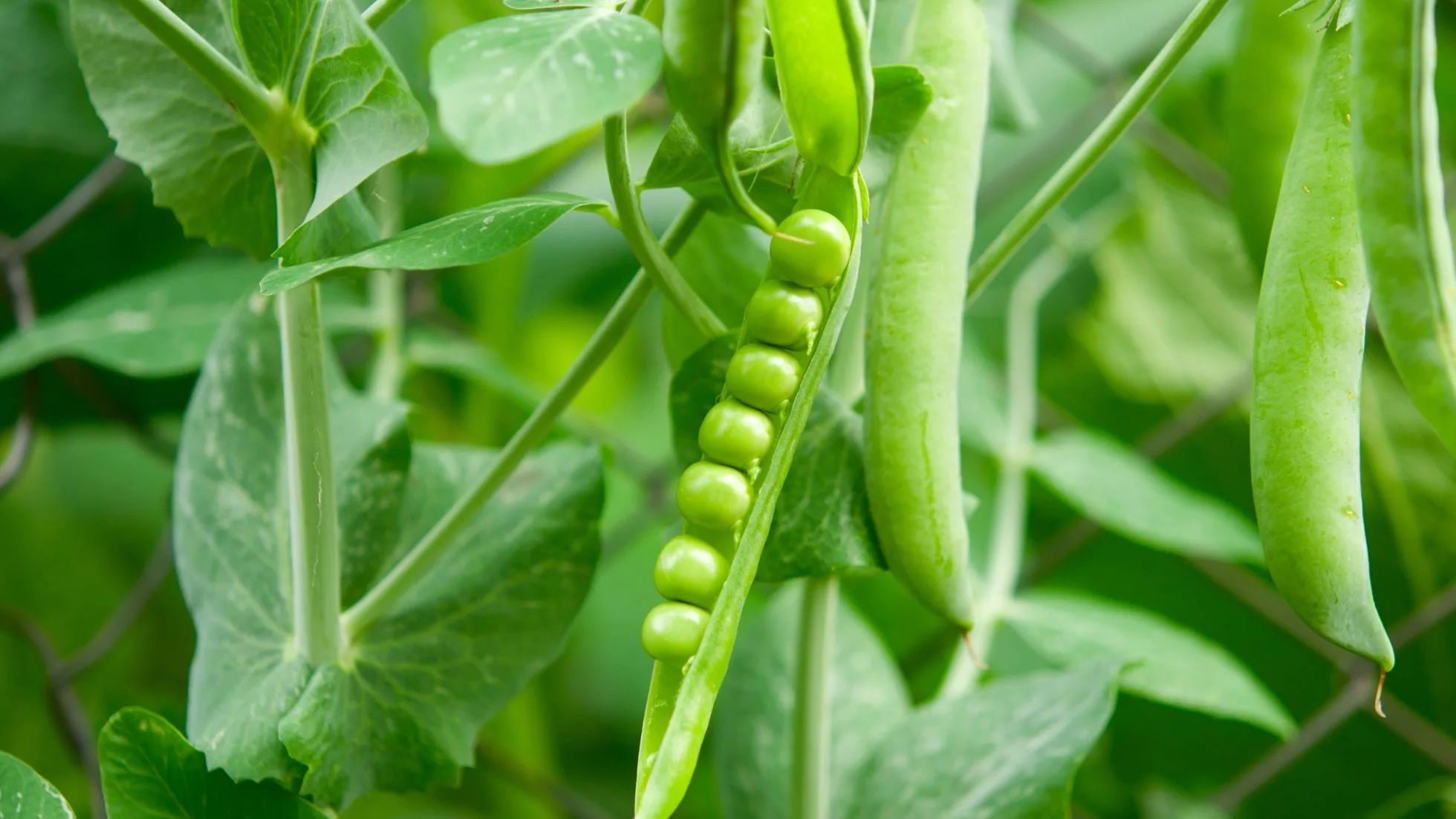Geum plant
Geum, also known as Avens, is a delightful perennial plant that adds charm to gardens. It features deep green foliage and tall stalks with dangling flowers in warm red, orange, and yellow tones. After flowering, unique seed heads with feathery gray tails develop. Geum thrives in sunny positions with regular watering and well-draining soil. It’s perfect for front-of-the-border planting, mass arrangements, and cut flowers.

Geum seeds
geum seeds are a simple way to propagate these beautiful flowering plants. Here’s a rundown:
- Planting time: Sow seeds indoors 6-8 weeks before the last frost or directly outdoors in early spring.
- Germination: Seeds germinate in 21-28 days at a temperature of around 68°F (20°C).
- Light: Seeds need light for germination, so don’t bury them too deep. Just press them lightly into the soil surface.
- Moisture: Keep the soil moist but not soggy until germination.
Geum care
Geum, also known as Avens, is a delightful perennial plant that holds its own in almost any flower border. Here are some care tips for Geum:
- Growing Conditions:
- Sunlight: Geum grows best in a sunny position, but in hot climates, provide afternoon shade to prevent scorching.
- Water: Regular watering is essential; they are not drought-tolerant.
- Soil: Well-draining soil is essential to prevent root rot.
Geum in pots
Geums can thrive in pots, though they often exhibit their best appearance when planted in borders, allowing them to spread into an informal mass of color. If you decide to grow Geums in containers, here are some tips:
- Choose the Right Pot: Choose a large pot with excellent drainage. Geums appreciate space, so they opt for a container that allows their roots to spread.
- Potting Mix: Opt for a high-quality potting mix that ensures effective drainage. Geums thrive in moisture-retentive soil.
- Planting:
- Fill the pot halfway with potting soil.
- Make several holes to accommodate the Geum modules (young plants).
- Position the modules so that the top of the soil from the module is just below the pot’s rim.
- Fill around the modules with soil and gently firm them down.
- Water thoroughly.
- Care:
- Water regularly during dry spells.
- Deadhead spent flowers to encourage continuous blooming.
- Geums appreciate a sunny to partially shaded spot.
Geum leaves
Geum leaves are a beautiful part of the plant, forming a basal rosette at the ground before the flower stalks emerge. Here’s a breakdown of their characteristics:
- Arrangement: The leaves grow in a basal rosette, meaning they form a circular cluster at the base of the plant.
- Shape: Geum leaves are pinnately compound, which means they have a central stalk with leaflets branching off on either side. The leaflets themselves can be lobed or serrated.
- Size and Color: The size and color of geum leaves can vary depending on the species. In general, they are green and hairy, with some varieties having a slightly bronzed or lime-green tinge. They typically reach around 4-8 inches in length.

Geum varieties
Here are some popular varieties with their distinct characteristics:
- Geum rivale (Water Avens): This variety is known for its nodding, cup-shaped flowers in shades of orange, red, and yellow. It has ferny, green foliage and reaches a height of 1-2 feet.
- Geum chiloense (Chilean Avens): This variety has large, single flowers in shades of scarlet, orange, and yellow. It has hairy, green foliage and grows up to 3 feet tall.
- Geum coccineum (Scarlet Avens): This variety boasts vibrant, scarlet-red, cup-shaped flowers. It has green, lobed foliage and reaches a height of 1-2 feet.
- Geum quellyon (Avens): This variety has bright yellow, cup-shaped flowers. It has ferny, green foliage and grows up to 2 feet tall.
- Geum urbanum (Wood Avens): This variety has small, yellow, nodding flowers. It has green, hairy foliage and reaches a height of 1-2 feet.
Geum Problems
Poor Flowering:
- Cause: Not enough sun (needs full sun to light shade) or overly rich soil.
- Fix: Move to a sunnier spot or avoid heavy fertilization.
Leaf Spots/Rot:
- Cause: Overwatering, especially in hot weather.
- Fix: Water only when the soil feels dry to the touch, improve drainage if needed.
Posts:
- Cause: Spider mites in hot weather.
- Fix: Encourage natural predators like ladybugs, and use insecticidal soap if infestation is severe.



Thanks for another informative site. Where else could I get that kind of info written in such an ideal way? I have a project that I’m just now working on, and I’ve been on the look out for such info.
I love the efforts you have put in this, thanks for all the great blog posts.